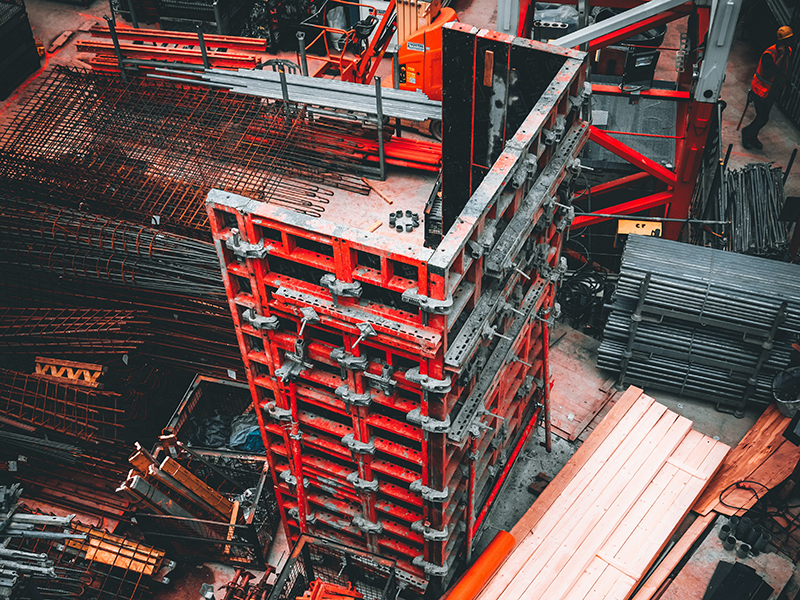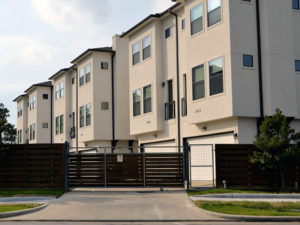New building materials reconditioning the construction industry

One year later, the construction industry emerges with new growth strategies responding to ongoing struggles of securing qualified trades prepared to meet industry demands in a competitive and regulated market.
Cost concerns remain a primary consideration for the construction as industry efficiency standards present challenges to balancing the project’s budget. The industry remains focused on the latest ground-breaking sustainable materials and advanced technology, escalating significant expenditure savings for yielding higher profits.
Closing 2020, the industry realized the need to integrate technological advancements to boost bottom-line margins. Companies relied on technology and innovative management strategies to re-invent remote office procedures preventing further disruption to the business. One of those strategies capturing the world’s attention was mobile communications, allowing daily operations to continue while management navigated through the turmoil.
Today, the following 3-year recovery indicators for the construction industry are optimistic, yet not without challenges.
Perspectives on the costs of construction materials
According to the U.S. Trading Economicreports, sustainable materials for all construction sectors are expected to exceed more than 500 billion by 2027, with an annual growth rate (GAGR) of 10.3 percent. Driving the current economic recovery factor and projecting the growth rate are the predicted construction activity increases.
Substantiating the latest cost of construction materials is the BLS.gov, Produce Price Index, reporting the average selling price for construction goods rose 0.5 percent in February 2021, that’s an increase to January’s 1.3 percent. Market comparisons show that the U.S. experienced similar changes in goods prices 12 years ago in December 2009.
The comparison information provides a graphic picture of last year’s impact on the economy with a predictable outlook of the future. Month-to-month variances reveal the slope of the industry’s growth through economic trends and construction market demands driving the industry’s future.
Intensifying industry precautions is the cost of materials attributed to the surge of demand-driven in part by the last year’s disruption and the current construction activity ramping up to kick-start the economy. Due to high material costs, companies find it necessary to raise the cost of doing business to maintain material quality and project spending budgets, intensifying the competition.
Sustainable Construction Materials Fit Build Designs
As the industry activity returns, competition heats up, increasing the value of sustainable materials as the selection process of project awards look to ease the economic impacts and promote growth within the construction industry. During our research, we looked at construction companies achieving success through the current challenges. Granted, there are factors known and unknown impacting this achievement — we found companies incorporating sustainable materials into the construction project development plans consistently increase profitability, industry recognition, and demand.
Although industry experts believe that sustainability will make the construction industry more resilient to supply shortages and the concept still poses a question related to the access of sufficient material volumes to meet recovery project demands, especially as material trends for sustainable construction materials is expected to see double digital increases annually.
Defining the composition of sustainable materials remains essential to these building elements. The critical feature is the raw material used to manufacture the building material. Next is the life-cycle performance (endurance). Finally, the material’s disposal method is recyclable, or will it naturally decompose without any damage to the environment?
With the advancement of technology and innovative engineering, sustainable material product applications include insulation, roofing, framing, interior, and exterior. The most used construction materials are concrete, steel, and wood—each known for sustainable characteristics and robust construction build and safety strengths. Out of the three, wood prices are on the rise with new build developments for concrete and steel in process.
Rising Trends of Modular and Prefabrication
Two standard construction designs comprised of one or more of the listed product applications are fully assembled modular structures for exterior or interior use or individually fabricated subassembly components delivered to the worksite ready for installation.
Both utilize cost savings and accelerating efficiency associated with up to 40 percent of construction expenditures related to materials and site workflows. According to industry experts in both sectors, modular and prefab construction can reduce construction work phases declining projects by an estimated average of 20 percent.
Construction developers and general contractors agreed with the use of modular and prefab designs as project cost-savings and efficient timeline features. The added value is that these build designs fit construction and design concepts for in multi-family, hospitality, commercial and office location projects.
If you look upward, making good use of limited space, modular and prefab designs are scaling inner-city streets. Full modular design applications have taken on the award-winning markets, growing significantly as design enhancements for architecture projects with specific space and functions — for example, airports and hospitals. The future of U.S. construction is slated to grow based on economic conditions and the need to build better in a demanding and changing environment. As for material costs, the industry is well aware of the increase to business and the viable solutions available — it’s a matter of accepting improved alternatives and integrating management practices meeting growing demands to build quickly, on-time, and within budget.



